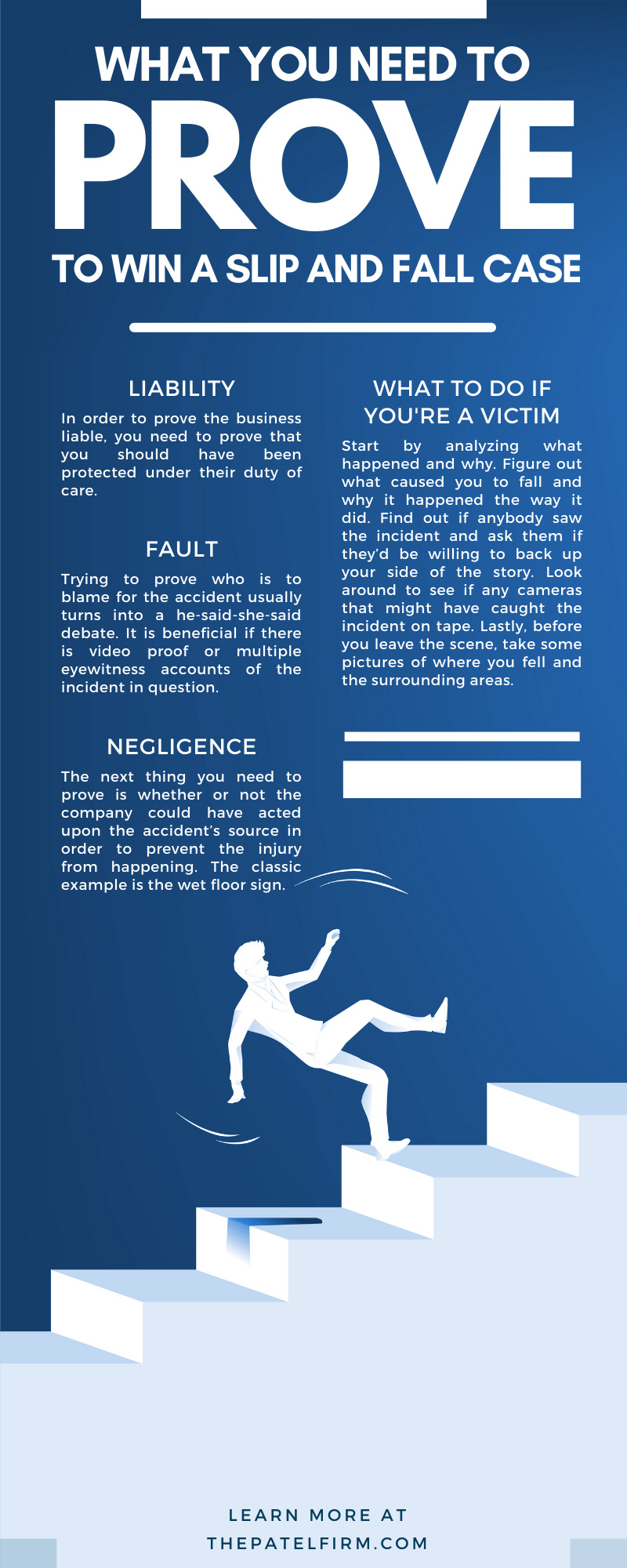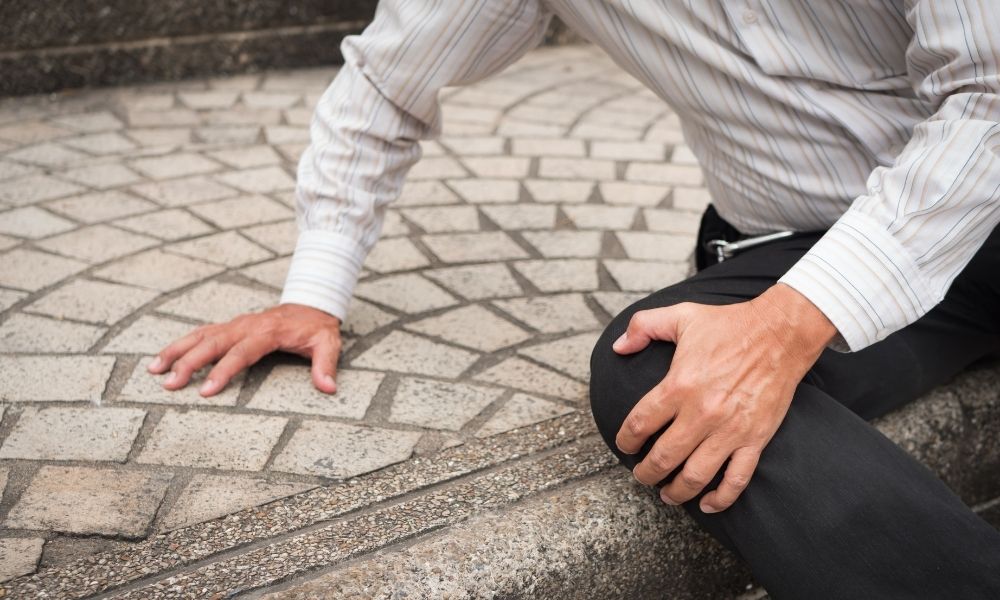Slip and fall injuries are among the most common types of injuries sustained in the US. Your typical daily activities can put you at risk for falls at any place or time.
If you or someone you know has suffered an injury after a slip and fall accident as a result of someone else’s mistake, you are most likely wondering what your legal options are, which is why we’ve made a list of what you need to prove to win a slip and fall case. Not all slip and fall injuries can be pursued legally, so it’s crucial to know what needs to be proven in order to better your chances of recovering damages for your injuries. After any slip and fall injury caused by another party’s negligence in is important to contact a qualified slip and fall accident lawyer that can help you pursue the at fault party and establish the following important factors:
Liability
In most states, the place of business is responsible for the safety of individuals who are within their establishment. In order to prove the business is liable for your slip and fall injuries, you need to prove that they knew or should have known of the dangerous conditions that caused the injury.
There are three classes that individuals fall under according to the company’s duty of care.
The first and most common is the invitee. This is anyone who has been invited into the premises during open hours. Invitees can be customers, clients, or employees. It is the business’ responsibility to keep invitees safe at all times.
The next classification is licensee. This is anyone who is invited into the place of business during off or after hours. A licensee can be employees who get to work early or leave late, cleaning services, trash and sanitation services, but it also includes most social guests or family members who are inside when the company is closed off to the general public.
The final classification is a trespasser. This is anyone who is on the premises after hours who wasn’t invited to be there. This usually applies to criminals or loiterers. If an employee or family member is on the premises without the owner’s permission, the legal defense might try to classify the individual as a trespasser.
In a situation where you are visiting a place of business, like a grocery store or dentist office, you are always considered an invitee. If you are a victim of a slip and fall accident at a place like this, remember these are commercial entities, who have large legal departments who are focused on minimizing your injuries.
Negligence
Proof of negligence is needed to pursue a slip and fall injury claim. The business must be negligent in the maintenance of their premises, meaning that the business knew or should have known about the defect that caused your fall and injury.
The classic example is the wet floor after mopping. If a floor got mopped recently, then it’s the business owner’s duty to warn others about the impending danger that lies ahead. If the business does not put a sign up warning others of the wet floor and potential danger and then someone falls and gets injured, the business was negligent. Here the business knew the floor was wet but did nothing to warn.
Another example is sticky soda residue from an old spill caused by another shopper on the ground at the grocery store, which causes a shopper to fall and be injured. Here, though the business did not have actual knowledge of the soda spill, it should have known/would have known of the dangerous condition that had been created if it had been properly maintaining its store.
On the other hand, people slip and fall on their own accord from untied shoes, tripping on their own feet, slipping out of flip flops, and losing balance in heels. An injury caused on a premise not caused by the business or employee negligence in not a recoverable event.
There are many other aspects to consider when trying to prove negligence.
- Were there any warning signs?
- Was there proper lighting?
- Does management regularly make any attempts to track and record possible hazards?
- Have people repeatedly reported the dangerous spot or area?
- Have injuries occurred from the same cause?
There are a number of factors that can prove that the business was negligent, and that their negligence led directly to your injury. A reputable slip and fall lawyer can help guide you through the process.
Fault
The final thing in our what you need to prove to win a slip and fall case list is fault. Trying to prove who is to blame for the accident usually turns into a he-said-she-said debate. It is beneficial if there is video proof or multiple eyewitness accounts of the incident in question. Proving fault is similar to proving negligence, and once liability is accepted and negligence has been proven the business is more likely to consider compensating the victim’s slip and fall injuries.
What To Do after a Slip and Fall Accident
If you suffered injuries after a slip and fall accident, it is important to hire an aggressive slip and fall lawyer who has a team ready to be deployed to:
- Analyze what happened and why.
- Figure out what caused you to fall and why it happened the way it did.
- Find out if anybody saw the incident and ask them if they’d be willing to give a written statement.
- Look around to see if any cameras that might have caught the incident on tape.
- Establish a claim with the appropriate at fault party.
- Take pictures of where you fell and the surrounding areas.
Not all injury attorneys know how to handle a slip and fall claim, but the personal injury lawyers at The Patel Law Firm are experienced in handling claims for slip and fall victims. If you believe you are a victim of negligence after suffering a slip and fall injury, contact a slip and fall accident lawyer in Corpus Christi today for a free consultation.



